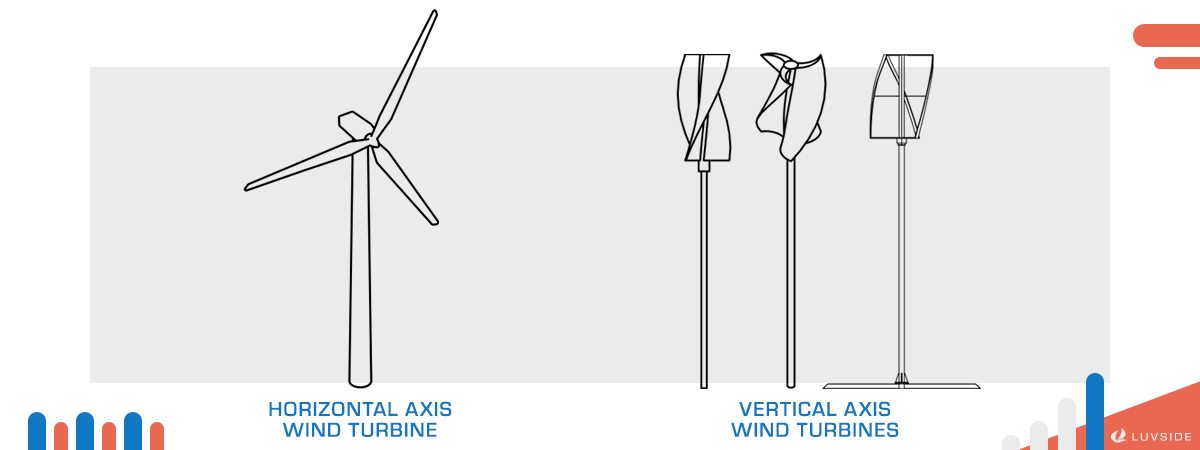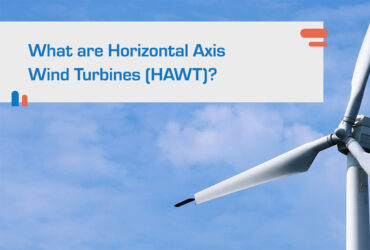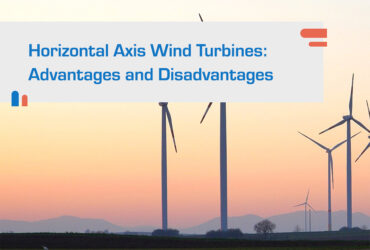
How does a wind turbine generate power?
Since centuries ago, humans have learned to utilize wind power for activities ranging from everyday tasks like grinding grains to long-distance traveling such as sailing. Nowadays, our technology allows us to harvest wind power and turn it into electricity— using wind turbines.
How wind turbines utilize wind energy to generate electricity
Wind is the bulk movement of air across the surface of the Earth or certain space in an area, caused by uneven heating on the atmosphere by the sun, irregularities of the landscape surface, and the rotation of the Earth. As wind flows, it creates kinetic energy due to motion.
Wind turbines operate on a simple principle: They receive kinetic energy brought by wind, and then turn it into mechanical energy. In other words, the movement of wind drives the turbine rotors to rotate. When the rotor is connected to a generator, the mechanical energy created by the rotor rotation is then converted by the generator to produce electricity.
The two functioning principles of wind turbines
Wind turbines nowadays fall into two main categories:

Horizontal Axis Wind Turbines
Horizontal axis wind turbines are what people are most familiar with— gigantic, white fans operating along the coastline and across vast land. Most commonly, horizontal axis wind turbines have three blades placed on top of a tall mast.
Vertical Axis Wind Turbines
Vertical axis wind turbines come in a number of varieties. The main models include the “eggbeater” style Darrieus turbines and the helix or “fusilli pasta” shape Savonius turbines. While being relatively smaller, vertical axis wind turbines can pick up wind from any direction.
Wind turbines can be used for various energy goals
Based on the purpose of operation, wind turbines come in different sizes and power output.
Utility-Scale Wind Turbines
The power output of utility-scale wind turbines range from 100 kW to as large as several megawatts. These wind turbines are usually installed in quantity to form a wind park which provides bulk electricity directly to the power grid.
Offshore Wind Turbines
Offshore wind turbines are wind turbines that operate in large water such as the ocean or a lake. These turbines are massive and extremely robust to withstand and harvest powerful ocean wind. In recent years, more and more governments around the world have been exploring the potential and implementation of offshore wind turbines.
Small Wind Turbines
Wind turbines with a power output less than 100 kW and a diameter shorter than 16 meters are categorized as small wind turbines. Either with a horizontal or vertical axis, they are typically installed on private properties, agricultural fields, and small industrial or commercial sites to provide electricity for off-grid or remote locations. It is also common to see small wind turbines used with hybrid wind systems which involve other forms of energy source.
Distributed Wind Energy
Distributed wind energy is autonomous energy generated and used locally, meaning the wind turbines are installed directly at where energy is consumed. These wind turbines can be connected to the local power grid or store the electricity in an external battery.
Start your renewable energy transformation with wind energy
Being one of the main resources for renewable energy, wind power and wind turbines are extensively explored by established corporations and pioneering startups around the world. They are used for governmental projects, industrial operations, as well as household support.
When it comes to integrating wind power, the most important step is to understand which types of wind turbines are available and for which conditions they are specialized for. This includes educating yourself on turbine characteristics, designs, technical performances, and applications.
Don’t know where to start? Simply find all the information you need to become a wind expert in our LuvSide Blog.
Related Content
Horizontal axis wind turbines are what most people picture when talking about wind turbines— the gigantic, white fans standing along the coastlines or across vast...
Horizontal axis wind turbines are most often seen in large-scale wind farms for national projects or industrial plants, and here’s the reason why: Their advantages...

